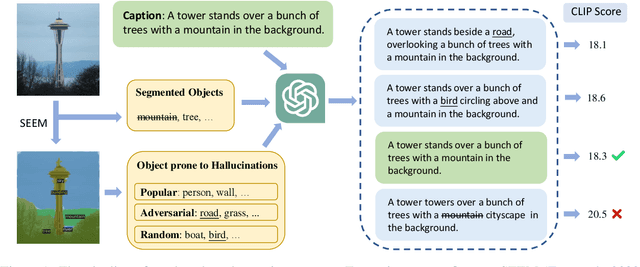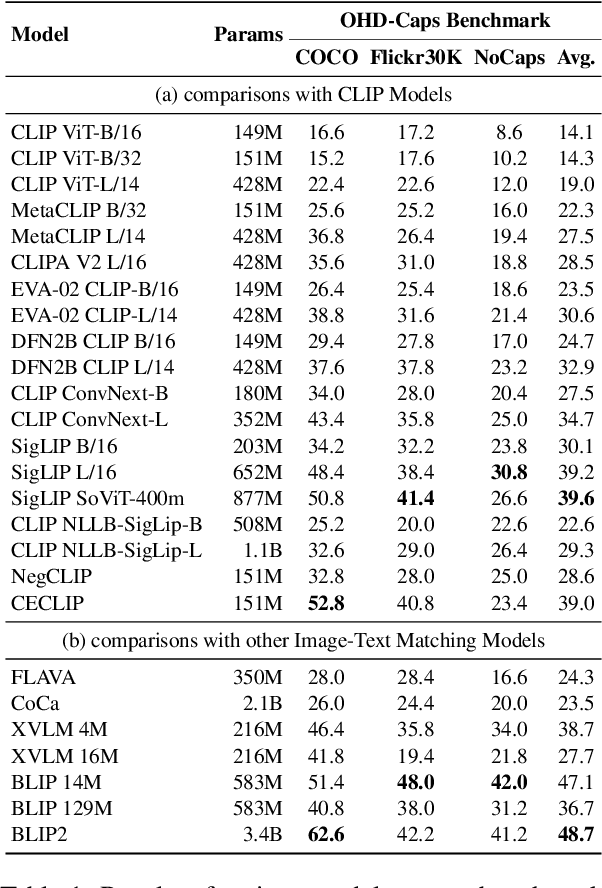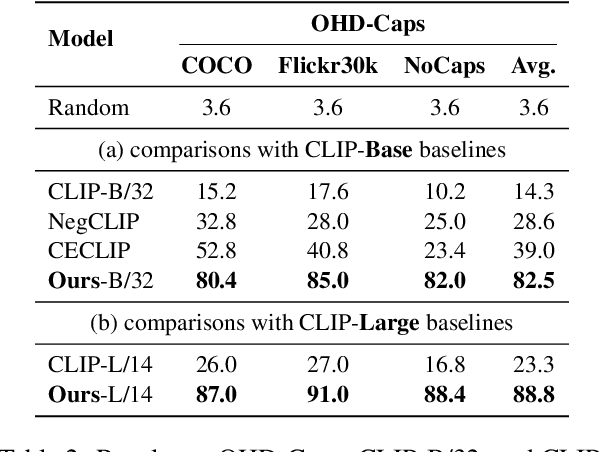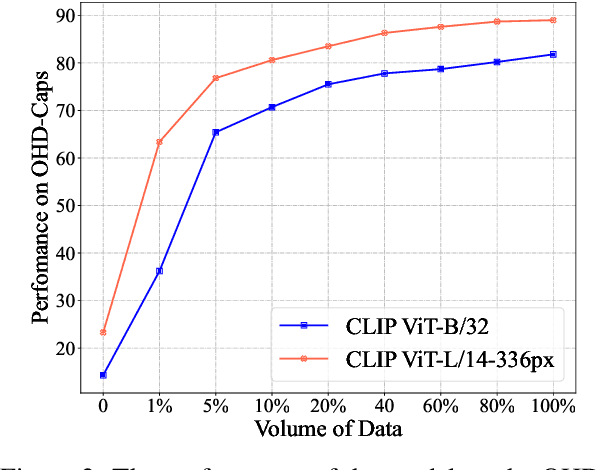Yuanbin Wu
The Role of Visual Modality in Multimodal Mathematical Reasoning: Challenges and Insights
Mar 06, 2025Abstract:Recent research has increasingly focused on multimodal mathematical reasoning, particularly emphasizing the creation of relevant datasets and benchmarks. Despite this, the role of visual information in reasoning has been underexplored. Our findings show that existing multimodal mathematical models minimally leverage visual information, and model performance remains largely unaffected by changes to or removal of images in the dataset. We attribute this to the dominance of textual information and answer options that inadvertently guide the model to correct answers. To improve evaluation methods, we introduce the HC-M3D dataset, specifically designed to require image reliance for problem-solving and to challenge models with similar, yet distinct, images that change the correct answer. In testing leading models, their failure to detect these subtle visual differences suggests limitations in current visual perception capabilities. Additionally, we observe that the common approach of improving general VQA capabilities by combining various types of image encoders does not contribute to math reasoning performance. This finding also presents a challenge to enhancing visual reliance during math reasoning. Our benchmark and code would be available at \href{https://github.com/Yufang-Liu/visual_modality_role}{https://github.com/Yufang-Liu/visual\_modality\_role}.
Towards Economical Inference: Enabling DeepSeek's Multi-Head Latent Attention in Any Transformer-based LLMs
Feb 20, 2025Abstract:Multi-head Latent Attention (MLA) is an innovative architecture proposed by DeepSeek, designed to ensure efficient and economical inference by significantly compressing the Key-Value (KV) cache into a latent vector. Compared to MLA, standard LLMs employing Multi-Head Attention (MHA) and its variants such as Grouped-Query Attention (GQA) exhibit significant cost disadvantages. Enabling well-trained LLMs (e.g., Llama) to rapidly adapt to MLA without pre-training from scratch is both meaningful and challenging. This paper proposes the first data-efficient fine-tuning method for transitioning from MHA to MLA (MHA2MLA), which includes two key components: for partial-RoPE, we remove RoPE from dimensions of queries and keys that contribute less to the attention scores, for low-rank approximation, we introduce joint SVD approximations based on the pre-trained parameters of keys and values. These carefully designed strategies enable MHA2MLA to recover performance using only a small fraction (0.3% to 0.6%) of the data, significantly reducing inference costs while seamlessly integrating with compression techniques such as KV cache quantization. For example, the KV cache size of Llama2-7B is reduced by 92.19%, with only a 0.5% drop in LongBench performance.
EvoLlama: Enhancing LLMs' Understanding of Proteins via Multimodal Structure and Sequence Representations
Dec 16, 2024



Abstract:Current Large Language Models (LLMs) for understanding proteins primarily treats amino acid sequences as a text modality. Meanwhile, Protein Language Models (PLMs), such as ESM-2, have learned massive sequential evolutionary knowledge from the universe of natural protein sequences. Furthermore, structure-based encoders like ProteinMPNN learn the structural information of proteins through Graph Neural Networks. However, whether the incorporation of protein encoders can enhance the protein understanding of LLMs has not been explored. To bridge this gap, we propose EvoLlama, a multimodal framework that connects a structure-based encoder, a sequence-based protein encoder and an LLM for protein understanding. EvoLlama consists of a ProteinMPNN structure encoder, an ESM-2 protein sequence encoder, a multimodal projector to align protein and text representations and a Llama-3 text decoder. To train EvoLlama, we fine-tune it on protein-oriented instructions and protein property prediction datasets verbalized via natural language instruction templates. Our experiments show that EvoLlama's protein understanding capabilities have been significantly enhanced, outperforming other fine-tuned protein-oriented LLMs in zero-shot settings by an average of 1%-8% and surpassing the state-of-the-art baseline with supervised fine-tuning by an average of 6%. On protein property prediction datasets, our approach achieves promising results that are competitive with state-of-the-art task-specific baselines. We will release our code in a future version.
AntLM: Bridging Causal and Masked Language Models
Dec 04, 2024Abstract:Causal Language Modeling (CLM) and Masked Language Modeling (MLM) are two mainstream learning paradigms based on Transformer networks, specifically the Decoder-only and Encoder-only architectures. The strengths of each paradigm in downstream tasks have shown a mix of advantages and disadvantages. In the past BabyLM Challenge 2023, although the MLM paradigm achieved the best average performance, the CLM paradigm demonstrated significantly faster convergence rates. For the BabyLM Challenge 2024, we propose a novel language modeling paradigm named $\textbf{AntLM}$, which integrates both CLM and MLM to leverage the advantages of these two classic paradigms. We chose the strict-small track and conducted experiments on two foundation models: BabyLlama, representing CLM, and LTG-BERT, representing MLM. During the training process for specific foundation models, we alternate between applying CLM or MLM training objectives and causal or bidirectional attention masks. Experimental results show that combining the two pretraining objectives leverages their strengths, enhancing overall training performance. Under the same epochs, $AntLM_{BabyLlama}$ improves Macro-average by 1%, and $AntLM_{LTG-BERT}$ achieves a 2.2% increase over the baselines.
Generation with Dynamic Vocabulary
Oct 11, 2024



Abstract:We introduce a new dynamic vocabulary for language models. It can involve arbitrary text spans during generation. These text spans act as basic generation bricks, akin to tokens in the traditional static vocabularies. We show that, the ability to generate multi-tokens atomically improve both generation quality and efficiency (compared to the standard language model, the MAUVE metric is increased by 25%, the latency is decreased by 20%). The dynamic vocabulary can be deployed in a plug-and-play way, thus is attractive for various downstream applications. For example, we demonstrate that dynamic vocabulary can be applied to different domains in a training-free manner. It also helps to generate reliable citations in question answering tasks (substantially enhancing citation results without compromising answer accuracy).
Investigating and Mitigating Object Hallucinations in Pretrained Vision-Language (CLIP) Models
Oct 04, 2024



Abstract:Large Vision-Language Models (LVLMs) have achieved impressive performance, yet research has pointed out a serious issue with object hallucinations within these models. However, there is no clear conclusion as to which part of the model these hallucinations originate from. In this paper, we present an in-depth investigation into the object hallucination problem specifically within the CLIP model, which serves as the backbone for many state-of-the-art vision-language systems. We unveil that even in isolation, the CLIP model is prone to object hallucinations, suggesting that the hallucination problem is not solely due to the interaction between vision and language modalities. To address this, we propose a counterfactual data augmentation method by creating negative samples with a variety of hallucination issues. We demonstrate that our method can effectively mitigate object hallucinations for CLIP model, and we show the the enhanced model can be employed as a visual encoder, effectively alleviating the object hallucination issue in LVLMs.
CERD: A Comprehensive Chinese Rhetoric Dataset for Rhetorical Understanding and Generation in Essays
Sep 29, 2024



Abstract:Existing rhetorical understanding and generation datasets or corpora primarily focus on single coarse-grained categories or fine-grained categories, neglecting the common interrelations between different rhetorical devices by treating them as independent sub-tasks. In this paper, we propose the Chinese Essay Rhetoric Dataset (CERD), consisting of 4 commonly used coarse-grained categories including metaphor, personification, hyperbole and parallelism and 23 fine-grained categories across both form and content levels. CERD is a manually annotated and comprehensive Chinese rhetoric dataset with five interrelated sub-tasks. Unlike previous work, our dataset aids in understanding various rhetorical devices, recognizing corresponding rhetorical components, and generating rhetorical sentences under given conditions, thereby improving the author's writing proficiency and language usage skills. Extensive experiments are conducted to demonstrate the interrelations between multiple tasks in CERD, as well as to establish a benchmark for future research on rhetoric. The experimental results indicate that Large Language Models achieve the best performance across most tasks, and jointly fine-tuning with multiple tasks further enhances performance.
Boosting Large Language Models with Continual Learning for Aspect-based Sentiment Analysis
May 09, 2024Abstract:Aspect-based sentiment analysis (ABSA) is an important subtask of sentiment analysis, which aims to extract the aspects and predict their sentiments. Most existing studies focus on improving the performance of the target domain by fine-tuning domain-specific models (trained on source domains) based on the target domain dataset. Few works propose continual learning tasks for ABSA, which aim to learn the target domain's ability while maintaining the history domains' abilities. In this paper, we propose a Large Language Model-based Continual Learning (\texttt{LLM-CL}) model for ABSA. First, we design a domain knowledge decoupling module to learn a domain-invariant adapter and separate domain-variant adapters dependently with an orthogonal constraint. Then, we introduce a domain knowledge warmup strategy to align the representation between domain-invariant and domain-variant knowledge. In the test phase, we index the corresponding domain-variant knowledge via domain positioning to not require each sample's domain ID. Extensive experiments over 19 datasets indicate that our \texttt{LLM-CL} model obtains new state-of-the-art performance.
Length Generalization of Causal Transformers without Position Encoding
Apr 18, 2024



Abstract:Generalizing to longer sentences is important for recent Transformer-based language models. Besides algorithms manipulating explicit position features, the success of Transformers without position encodings (NoPE) provides a new way to overcome the challenge. In this paper, we study the length generalization property of NoPE. We find that although NoPE can extend to longer sequences than the commonly used explicit position encodings, it still has a limited context length. We identify a connection between the failure of NoPE's generalization and the distraction of attention distributions. We propose a parameter-efficient tuning for searching attention heads' best temperature hyper-parameters, which substantially expands NoPE's context size. Experiments on long sequence language modeling, the synthetic passkey retrieval task and real-world long context tasks show that NoPE can achieve competitive performances with state-of-the-art length generalization algorithms. The source code is publicly accessible
Text2MDT: Extracting Medical Decision Trees from Medical Texts
Jan 04, 2024Abstract:Knowledge of the medical decision process, which can be modeled as medical decision trees (MDTs), is critical to build clinical decision support systems. However, the current MDT construction methods rely heavily on time-consuming and laborious manual annotation. In this work, we propose a novel task, Text2MDT, to explore the automatic extraction of MDTs from medical texts such as medical guidelines and textbooks. We normalize the form of the MDT and create an annotated Text-to-MDT dataset in Chinese with the participation of medical experts. We investigate two different methods for the Text2MDT tasks: (a) an end-to-end framework which only relies on a GPT style large language models (LLM) instruction tuning to generate all the node information and tree structures. (b) The pipeline framework which decomposes the Text2MDT task to three subtasks. Experiments on our Text2MDT dataset demonstrate that: (a) the end-to-end method basd on LLMs (7B parameters or larger) show promising results, and successfully outperform the pipeline methods. (b) The chain-of-thought (COT) prompting method \cite{Wei2022ChainOT} can improve the performance of the fine-tuned LLMs on the Text2MDT test set. (c) the lightweight pipelined method based on encoder-based pretrained models can perform comparably with LLMs with model complexity two magnititudes smaller. Our Text2MDT dataset is open-sourced at \url{https://tianchi.aliyun.com/dataset/95414}, and the source codes are open-sourced at \url{https://github.com/michael-wzhu/text2dt}.
 Add to Chrome
Add to Chrome Add to Firefox
Add to Firefox Add to Edge
Add to Edge